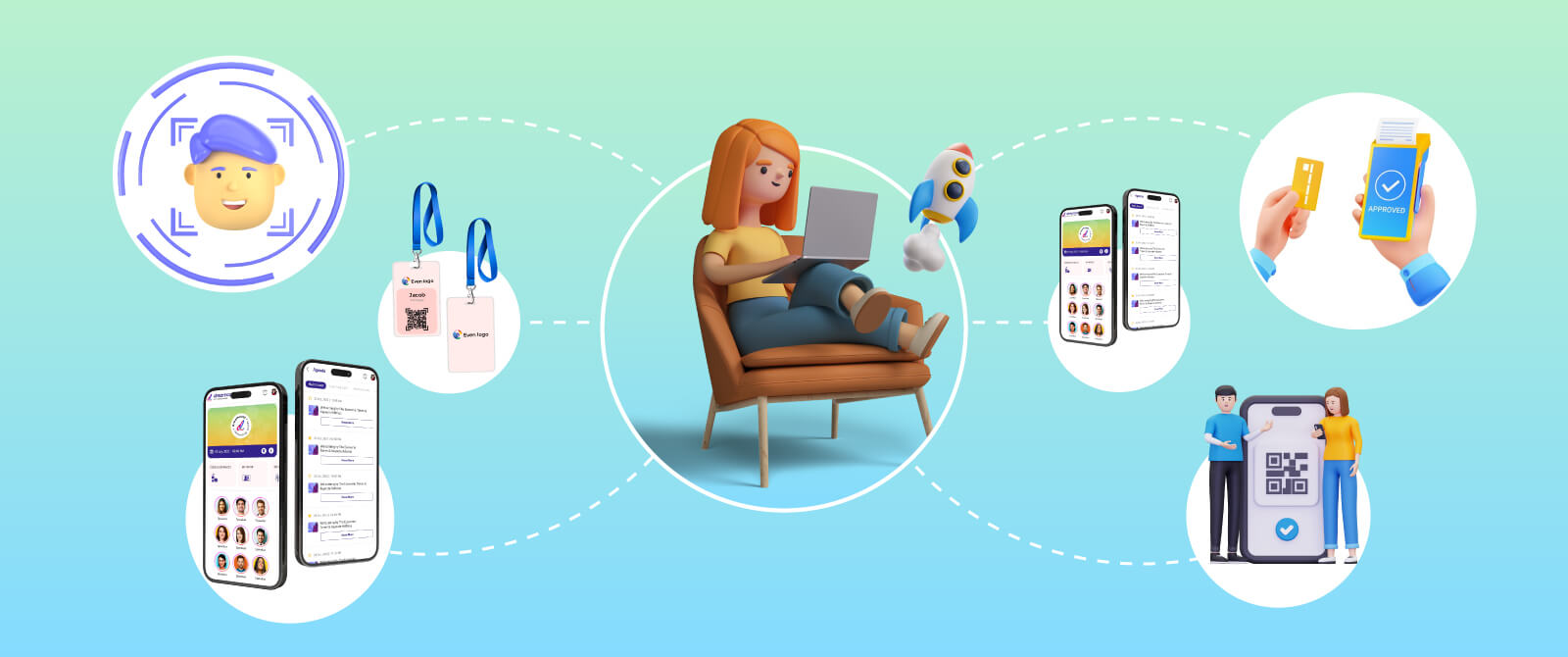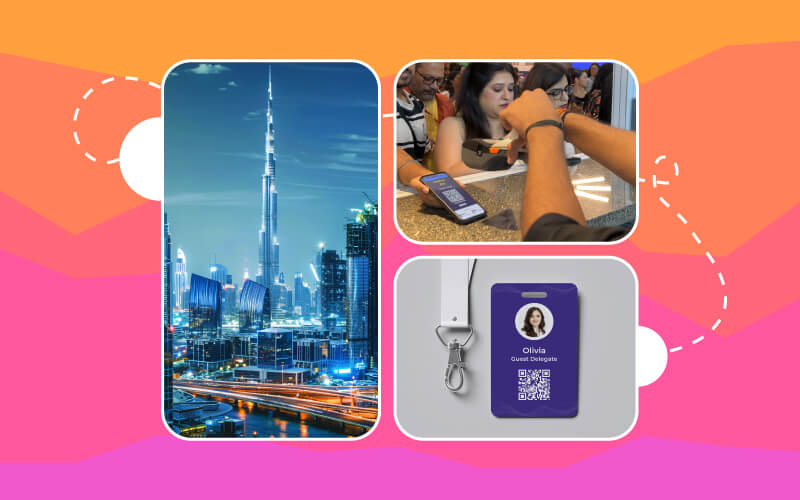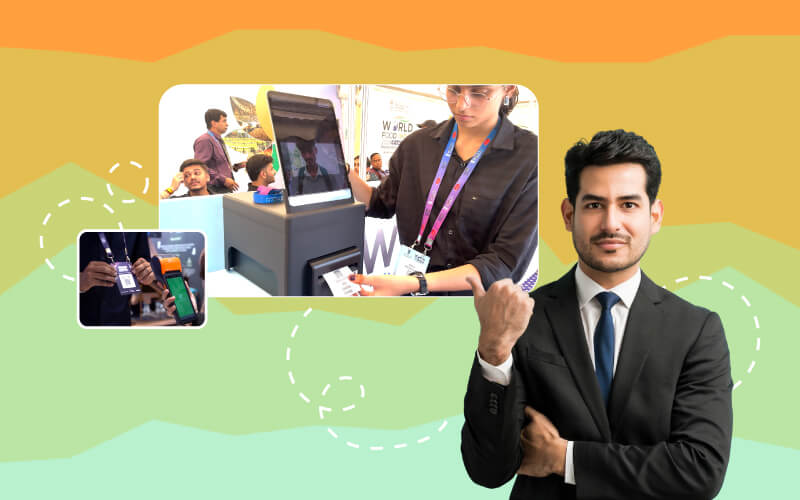We used to stand in queues for event tickets, but now things have changed thanks to contactless event technology. Gone are the days when we used to wait in long queues to purchase tickets and repeat the same check-in procedure. Be it conferences, trade shows, music concerts, exhibitions, expos, or any large events, these technologies have changed the entire execution of these events. This comprehensive guide will delve into the workings of contactless technology. So without further ado, let’s start;
What Is Contactless Event Technology?
Contactless technology for events refers to digital tools or services that make events safer and more efficient by reducing physical contact. These technologies have become very popular and are changing how we participate in events. Moreover, the significance of contactless technology today stems from its ability to ensure safety, convenience, and enhanced interaction. Here are some of the examples of contactless event solutions:

Certainly! Here are examples of contactless event technology that enhances safety, efficiency, and convenience:
- Event Communication Methods
- Online Payments
- Digital Tickets and Ticket Tiering
- Ticket Scanning
- Event Badge Printing
- Facial Recognition
- Mobile Event Apps
- Digital Floor Plans
Contactless Event Technology: Types and How They Work
In this section, we will discuss all the event technologies and how they work to ensure streamlined event management. So without wasting time, let’s quickly start:
Facial Recognition
One of the most trending and easy contactless event technologies for event access is ‘Facial Recognition’. It’s known for its sophisticated algorithms that scan and analyze the attendees by facial features. At the event’s check-in, facial recognition cameras capture the unique facial characteristics of each attendee, then they compare the features with a pre-existing database to verify the entry process. However, this seamless process eliminates the need for manual tickets or badges. It enhances the experience by following security measures and seamless self-check-in.
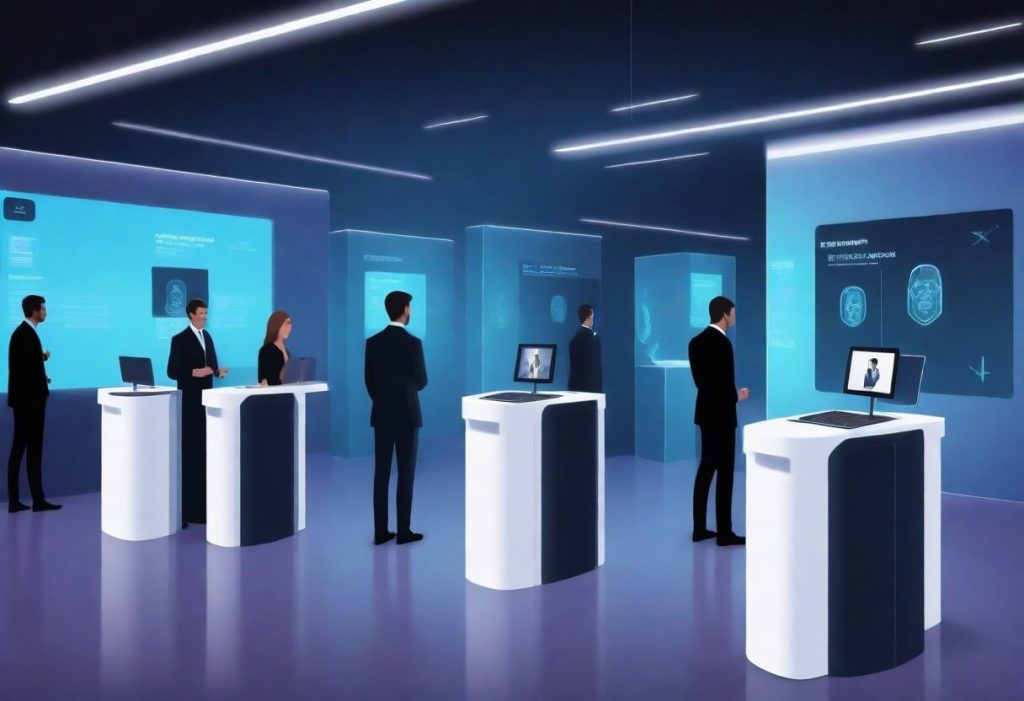
Turnstile Gate Access
With continuous advancements in event technologies, turnstile gate access systems are in the trend of delivering amazing experiences. The Turnstile gate utilizes advanced sensors to detect the presence of attendees when they reach the event’s check-in points. These advanced sensors then trigger the turnstile gate to rotate and grant access without any physical contact. However, this turnstile gate access system minimizes the waiting queues and optimizes the entire crowd management along with bolstering the overall event security.
Mobile Event Apps
Personalized mobile event apps are one of essential and indispensable tools for participants because they provide event information at their fingertips. Be it detailed schedules, interactive maps’ speaker profiles, session reminders, or insights, these mobile apps come with seamless event navigation features.
However, contactless event technology like mobile apps easily facilitates onsite event registration, ticketing and networking opportunities. This further empowers the participants to engage in the event digitally and effortlessly manage the event participants.

RFID (Radio-Frequency Identification)
RFID or Radio-frequency identification plays a crucial role in event execution. By leveraging radio waves to identify and track objects equipped with RFID tags (wristbands, badges). Event organizers can easily manage access control or streamline entry procedures and facilitate cashless transactions with these RFID-enabled credentials.
All event attendees have to do is simply tap their RFID wristbands or badges against RFID readers to gain access to different event areas or make purchases without any need for physical contact or a ticket. In addition, RFID technology allows event planners to personalize attendee interactions by providing target offers or recommendations
NFC (Near Field Communication)
NFC technology, similar to RFID, is also one of the ways to execute events seamlessly. It establishes communication between compatible devices within a short range. At events, NFC-enabled devices such as mobile phones or badges allow attendees to interact with NFC-enabled terminals for various purposes. This further allows attendees to use NFC technology to gain entry to restricted areas within an event or make contactless payment solutions for purchases. They can exchange contact information with other participants. Moreover, by simply tapping their NFC-enabled devices against terminals, participants can easily navigate the event and complete transactions. Also, NFC streamlines attendee engagement and transaction process.

Badge Printing
We usually wear badges to large events such as summits, conferences, and music events. Similarly, badge printing also enables the creation of contactless badges embedded in RFID or NFC chips. These badges act as digital credentials that can be scanned at entry points and tracked for session attendance. Additionally, RFID or NFC-enabled badges assist in getting access to specific areas within the event. In addition, this ensures efficient crowd management along with personalized attendee experiences.
Live Streaming
Wouldn’t it be great if you could take part in an event without being present physically? One such contactless event technology is live-streaming, which extends the reach of events beyond physical boundaries. It allows global attendees to participate in real-time from anywhere in the world. For example, if you would like to attend a corporate conference or music concert that you are unable to because of some reason, you can do so using a live streaming service. With the streaming of event sessions online, international audiences can be engaged, visibility can be heightened, and community engagement can be fostered.
AR and VR (Augmented Reality and Virtual Reality):
AR and VR technologies are parts of contactless event technology which is known for immersive experiences with a blend of digital content into the physical environment. In events, AR and VR technologies enable participants to engage themselves with augmented exhibits and explore virtual environments. At the same time, interacting with presentations and simulations without any need for physical interaction. AR applications allow attendees to overlay digital information onto real-world objects. It also provides attendees with interactive wayfinding features and guides them through event spaces with directional cues, navigation aids, and real-time information
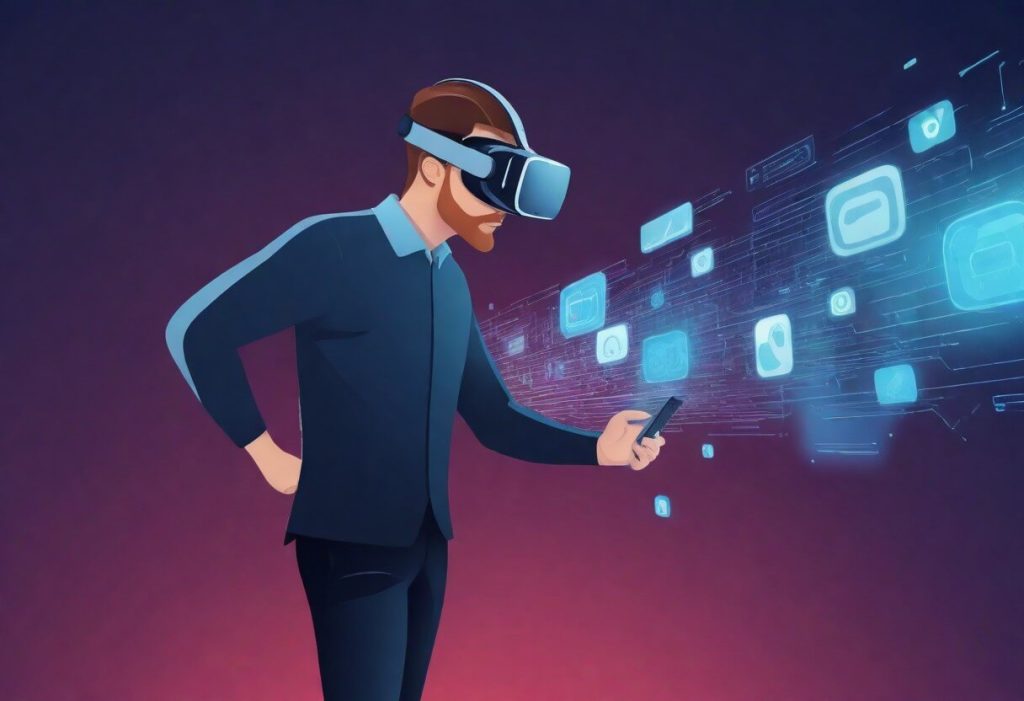
On the other hand, VR-based applications allow attendees to experience virtual realms where they can participate in amazing activities and simulations that provide unique and memorable experiences. For instance, in a trade show, exhibitors can design virtual spaces that attendees can explore using VR headsets which further dynamically and interactively helps in showcasing products.
Mobile Wallets
Paying with an app is something we all do. Mobile wallet applications are another crucial aspect of contactless technology. With these apps, attendees can make payments for self-check-in. This eliminates the need for physical currency or cash/card. Attendees can link their preferred payment system to their mobiles and conveniently purchase merchandise, food or any service at the event. Without any hassle of cash or credits, attendees can enjoy streamlined event operations. However, mobile wallet apps provide a secure and efficient contactless payment solution which further contributes to seamless and enjoyable event experiences.
AI-Chatbots
AI-powered chatbots are essential for contactless events, offering instant help, event info, and personalized advice. They use AI to understand questions and give relevant answers. Attendees can chat with them on messaging apps or event apps, getting quick assistance. These chatbots boost attendee satisfaction by providing tailored support throughout the event, all without requiring face-to-face interaction.
QR Code-Based Payments:
Similar to mobile wallets, QR code-based payments offer attendees a safe and easy way to pay by scanning QR codes with their smartphones. This makes paying simpler because they don’t need cash or cards which reduces reliance on old payment methods. Attendees can quickly scan QR codes at vendor booths or payment spots for fast and secure transactions. Plus, QR code payments are safer because they encrypt payment details, lowering the chance of fraud. Overall, this makes paying hassle-free for attendees and boosts the success of events.
Conclusion
By the end of this blog, we know that by leveraging the capabilities of these contactless event technologies, organizers can streamline entire event operations. Also, they can optimize attendee experiences and ensure prioritising safety in today’s event industry. Moreover, if you’re also a host looking forward to such event technologies for onsite event registrations, check-in, ticketing, access management, and more. You are at the right place. Book your free demo with us and get all your queries resolved.



